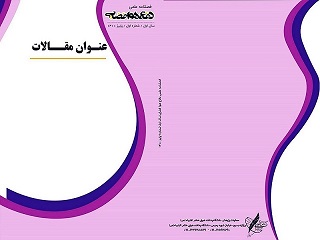نوع مقاله : مقاله پژوهشی
نویسندگان
1 استادیار گروه مواد و پدافند غیرعامل، دانشکده مهندسی مکانیک، دانشگاه پدافند هوایی خاتم الانبیا(ص)
2 استادیار دانشگاه پدافند هوایی خاتم الانبیاء(ص)،تهران،ایران
چکیده
خنککاری لایهای یکی از مهمترین و تأثیرگذارترین بخشهای پرههای توربینهای گاز و موتورجت به شمار میآید. در این مقاله، خنککاری لایهای پرههای توربین گاز، روی صفحهی تخت به صورت سهبعدی، با روش حجم محدود و با استفاده از مدل اغتشاشی k-ε واقعی شده که بهبود یافتهی مدل استاندارد میباشد، بررسی شده است. در این بررسی برای یافتن بهترین حالت خنککاری، تأثیرات نسبت دمش، نسبت دانسیته با تزریق دو سیال هوا و دیاکسیدکربن به عنوان سیال سرد (DR)، اثر تغییر زاویهی تزریق سیال خنککننده (زاویهی مرکب) و تأثیر تغییر درصد اغتشاشات جریان اصلی روی راندمان خنککاری مورد بررسی قرار گرفته است. برای اعتبارسنجی دادهها، راندمان خنککاری لایهای دادههای عددی با دادههای تجربی مقایسه شد که نتایج نمایانگر انطباق بسیار خوب روش عددی بکار رفته بود. نتایج بدست آمده نشان داد که با افزایش نسبت دمش و درصد اغتشاشات جریان اصلی، راندمان خنککاری کاهش مییابد. همچنین با افزایش زاویهی تزریق سیال خنککننده، راندمان خنککاری لایهای افزایش مییابد. در نتیجه با افزایش زاویهی تزریق سیال خنککننده در نسبت دمشهای کم و درصد اغتشاشات کم، میتوان راندمان خنککاری را به اندازهی قابل ملاحظهای افزایش داد.
کلیدواژهها
موضوعات
عنوان مقاله [English]
Effect of the blowing ratio, density ratio and turbulence intensity in film cooling of turbine blades for compound angle holes on a flat plate
نویسندگان [English]
- Gholamreza Faghani 1
- Samad AghaMohammadi 2
1 Assistance Professor, Materials and Passive Defense department , Faculty of Mechanical Engineering, Khatam-Ol-Anbia (PBU) Air Defense University
2 Assistant Prof., khatam al-anbia (pbuh) University, Tehran, Iran
چکیده [English]
Film cooling is one of the most important parts of gas turbines and turbojet engines. In this paper, three dimensional cooling performance on a flat plate is calculated with a 3D finite-volume method and the realizable k-ε turbulence model which is the improved of standard k-ε turbulence model. In this investigation, to obtain the best film cooling effectiveness case, the effects of density ratio (by air and CO2 as coolant) (DR), blowing ratio (M), the effect of changing the injection angle of coolant fluid (compound angle) and the main stream turbulence intensity on film cooling effectiveness are studied. For validation, the film cooling effectiveness for numerical data has been compared with the experimental data and these comparisons have been shown a good agreement between experimental and numerical data. Results showed that by increasing blowing ratio and the main stream turbulence intensity, the film cooling effectiveness decreases. Also, by increasing the injection angle of coolant fluid, the film cooling effectiveness increases. As a result, by increasing the injection angle of coolant fluid in low blowing ratios and main stream turbulence intensity, the film cooling effectiveness can increase considerable.
کلیدواژهها [English]
- Film cooling effectiveness
- Density ratio
- Blowing ratio
- Compound angle
- Turbulence intensity

